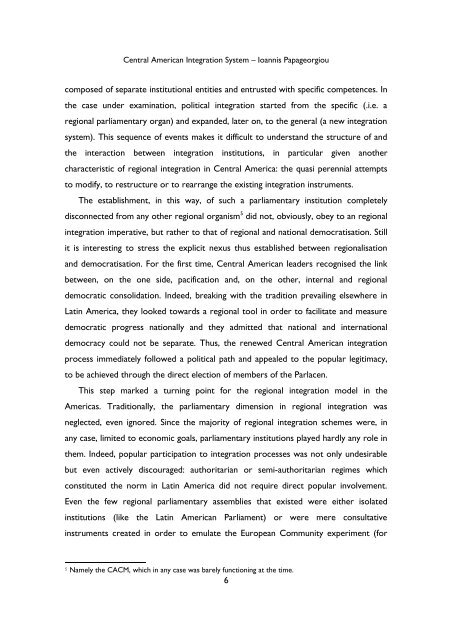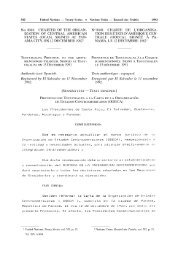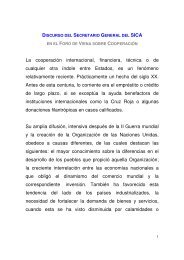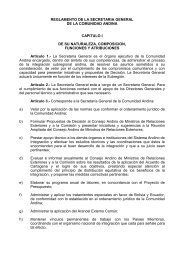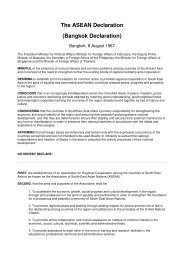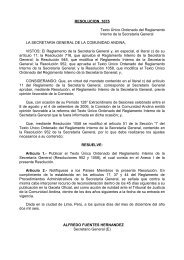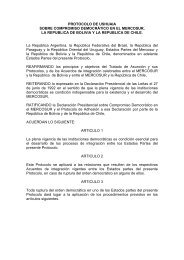Central American Integration System â Ioannis Papageorgiou
Central American Integration System â Ioannis Papageorgiou
Central American Integration System â Ioannis Papageorgiou
Create successful ePaper yourself
Turn your PDF publications into a flip-book with our unique Google optimized e-Paper software.
<strong>Central</strong> <strong>American</strong> <strong>Integration</strong> <strong>System</strong> – <strong>Ioannis</strong> <strong>Papageorgiou</strong><br />
composed of separate institutional entities and entrusted with specific competences. In<br />
the case under examination, political integration started from the specific (.i.e. a<br />
regional parliamentary organ) and expanded, later on, to the general (a new integration<br />
system). This sequence of events makes it difficult to understand the structure of and<br />
the interaction between integration institutions, in particular given another<br />
characteristic of regional integration in <strong>Central</strong> America: the quasi perennial attempts<br />
to modify, to restructure or to rearrange the existing integration instruments.<br />
The establishment, in this way, of such a parliamentary institution completely<br />
disconnected from any other regional organism 5 did not, obviously, obey to an regional<br />
integration imperative, but rather to that of regional and national democratisation. Still<br />
it is interesting to stress the explicit nexus thus established between regionalisation<br />
and democratisation. For the first time, <strong>Central</strong> <strong>American</strong> leaders recognised the link<br />
between, on the one side, pacification and, on the other, internal and regional<br />
democratic consolidation. Indeed, breaking with the tradition prevailing elsewhere in<br />
Latin America, they looked towards a regional tool in order to facilitate and measure<br />
democratic progress nationally and they admitted that national and international<br />
democracy could not be separate. Thus, the renewed <strong>Central</strong> <strong>American</strong> integration<br />
process immediately followed a political path and appealed to the popular legitimacy,<br />
to be achieved through the direct election of members of the Parlacen.<br />
This step marked a turning point for the regional integration model in the<br />
Americas. Traditionally, the parliamentary dimension in regional integration was<br />
neglected, even ignored. Since the majority of regional integration schemes were, in<br />
any case, limited to economic goals, parliamentary institutions played hardly any role in<br />
them. Indeed, popular participation to integration processes was not only undesirable<br />
but even actively discouraged: authoritarian or semi-authoritarian regimes which<br />
constituted the norm in Latin America did not require direct popular involvement.<br />
Even the few regional parliamentary assemblies that existed were either isolated<br />
institutions (like the Latin <strong>American</strong> Parliament) or were mere consultative<br />
instruments created in order to emulate the European Community experiment (for<br />
5<br />
Namely the CACM, which in any case was barely functioning at the time.<br />
6


